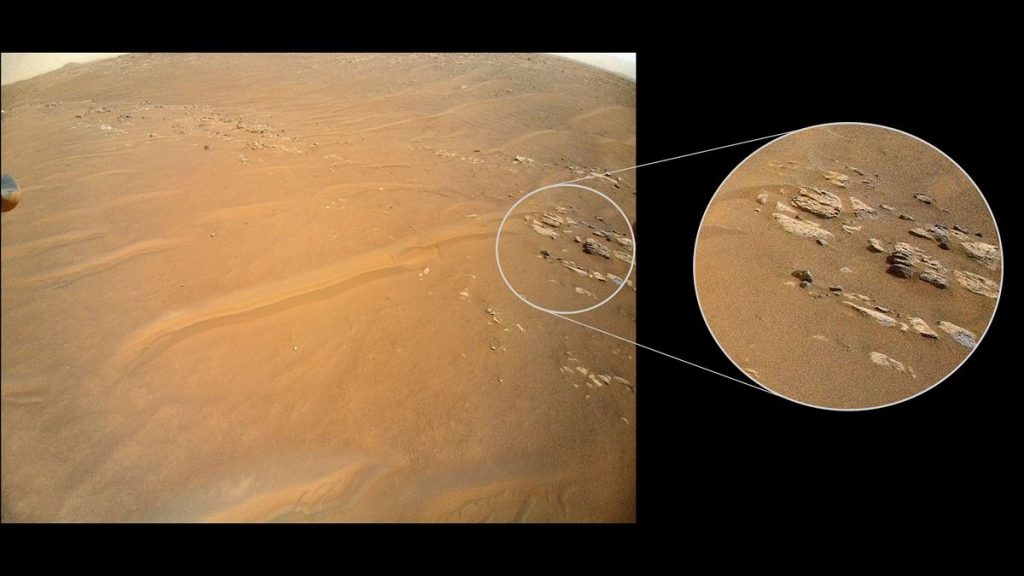As NASA’s Martian helicopter recovers from a communications glitch, data from a past flight is showing a Red Planet ridge in high definition.
The Ingenuity helicopter captured the rocky outcrop, nicknamed “Fortun Ridge” after a parish in Norway, as a part of its scouting mission for the Perseverance life-seeking rover. Ingenuity imaged the ridgeline on April 23, during its 27th flight on Mars.
“Previous images suggest tilted layers of rock in this area of Mars are uncommon, unlike on Earth, where plate tectonics and earthquakes cause tilting,” officials with NASA’s Jet Propulsion Laboratory (JPL), which manages the mission, said of the Ingenuity images on May 3.
Related: 1 year later, Ingenuity helicopter still going strong on Mars
Scientists plan to compare these fresh images from Mars with another “angled ridgeline” nicknamed Artuby, found in the South Séítah region of Jezero Crater that both Perseverance and Ingenuity are exploring.
“Comparing Ingenuity’s shots of the two angled ridgelines may help team scientists better understand the history of the crater floor and, possibly, the forces that were at play in this part of Jezero Crater billions of years ago,” JPL representatives wrote.
Ingenuity recently experienced a communications glitch that team members have blamed on dust in the atmosphere. JPL reestablished contact with the miniature Mars chopper on May 5 after Ingenuity missed a scheduled call-in two days before, the agency reported May 6.
Initial analysis suggests high levels of dust in the atmosphere, combined with low ambient temperatures on Mars, rendered the helicopter temporarily unable to communicate with its rover base station, which relays information to Earth.
“The dust diminishes the amount of sunlight hitting the solar array, reducing Ingenuity’s ability to recharge its six lithium-ion batteries,” JPL representatives said. Among other issues, the helicopter briefly lost its ability to keep time properly on Mars, hence missing a scheduled check-in with Perseverance.
JPL is changing how Ingenuity charges its battery, to help preserve power. The helicopter is operating far beyond its initial flight plan of five sorties, and engineers are assessing how to keep it working in the Martian winter even though its commercially manufactured parts are not optimized to deal with deep cold.
Follow Elizabeth Howell on Twitter @howellspace. Follow us on Twitter @Spacedotcom or Facebook.

